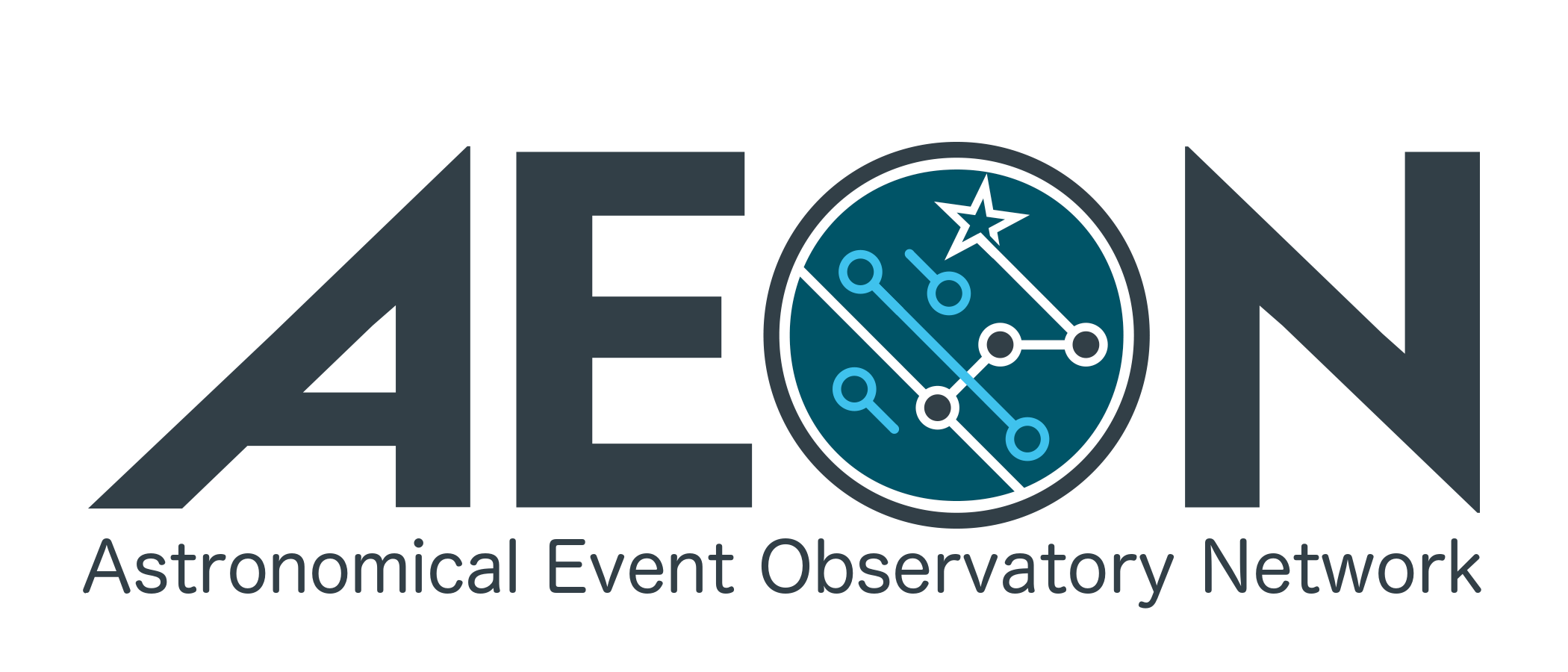AEON
What is AEON?
The Astronomical Event Observatory Network (AEON) is a facility ecosystem for accessible and efficient follow up of astronomical transients and Time Domain science.
At the heart of the network, NOIRLab, with its SOAR 4.1m and Gemini 8m telescopes (and soon the CTIO Blanco 4m), has joined forces with Las Cumbres Observatory to build such a network for the era of the Legacy Survey of Space and Time (LSST). SOAR is the pathfinder facility for incorporating the 4m and 8m class telescopes into AEON. Gemini Observatory currently works within AEON using the standard queue process. Observation requests for targets of opportunity (ToOs) can be submitted programmatically via the Gemini plugin in the TOM Toolkit or any Python script.
An article on Science magazine features AEON and the windows into Time Domain, Multi-Messenger Astronomy, and general astronomical programs that this project will open up for the astronomical community in the near future. For a quick, simple introduction to AEON, watch the video below.
AEON is now seeking to expand to additional telescopes. This page at the Las Cumbres website describes the initiative, and we link here to our written note. Participation in AEON may be an interesting option for international groups taking part in the Legacy Survey of Space and Time (LSST). As announced by Vera C. Rubin Observatory, one of several possible in-kind contributions to the LSST is, “Observing time, dedicated to proposals led by US PIs, at key non-US facilities”. In accordance with the NOIRLab Open-sky policy, any qualified scientist may compete in peer reviewed competition for facility access, and this policy extends to AEON. Potential participants with special requirements are invited to initiate a conversation.
NOIRLab has been offering AEON-mode queue observation at SOAR since 2019B. AEON brings a new observing mode for SOAR: a highly automated observing queue run with minimal human intervention. At present, guide star acquisition, and on-slit acquisition of the science target (for spectroscopic observations), are the only tasks done manually. As has always been the case, Telescope Operators also assess the observing conditions and have the authority and means to start/stop the AEON-queue based on weather or because of technical reasons. Other than these, the AEON-queue on SOAR is created entirely in an unsupervised, automatic way by a scheduler software at Las Cumbres Observatory, which takes all requests submitted by the various program PIs, and sorts them according to a number of parameters, which include (but not limited to) position on the sky, distance to the Moon and airmass constraints, SOAR minimum and maximum elevation limits, time window specified in the observing request.
NEW FOR 2025B: AEON on the CTIO Victor Blanco 4m telescope
Starting the 2025B semester, in its Call for Proposals, NOIRLab in collaboration with Las Cumbres Observatory, will offer the NEWFIRM wide-field near-IR imager in AEON mode automated queue operation. This first semester will be a “science validation” phase for this new operational mode on Blanco. This highly automated queue is ideally suited for Time-Domain Astronomy (TDA) programs, but is also convenient for other science cases, such as programs with target fields spread throughout the semester that do not require specific observation times. We will run NEWFIRM in AEON mode only with the JHKs filters, and 2x2, 3x3, 4x4 and 5-point dither patterns. If your science requires the use of narrow-band filters, or a special dither pattern, then we encourage you to request classically scheduled nights. As with AEON on SOAR, Observation Requests will be placed through the Las Cumbres Observation portal, at any time, and we will use the
Las Cumbres automated scheduler to build dynamic schedules for each night. NEWFIRM AEON data will be accessed only through the NOIRLab Science Archive.
If you have questions about whether your program is a good fit for AEON with NEWFIRM on Blanco, please contact guillermo.damke or cesar.briceno at noirlab.edu. For details about NEWFIRM go to the instrument web page: https://noirlab.edu/science/programs/ctio/instruments/newfirm or contact sean.points at noirlab.edu
AEON facilities web pages
Updated on March 6, 2025, 5:37 am
